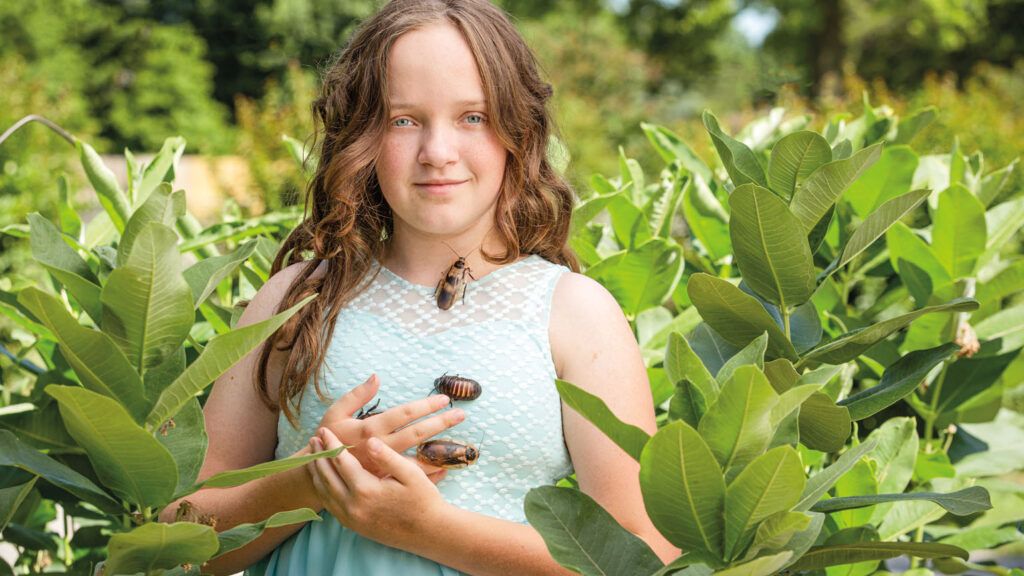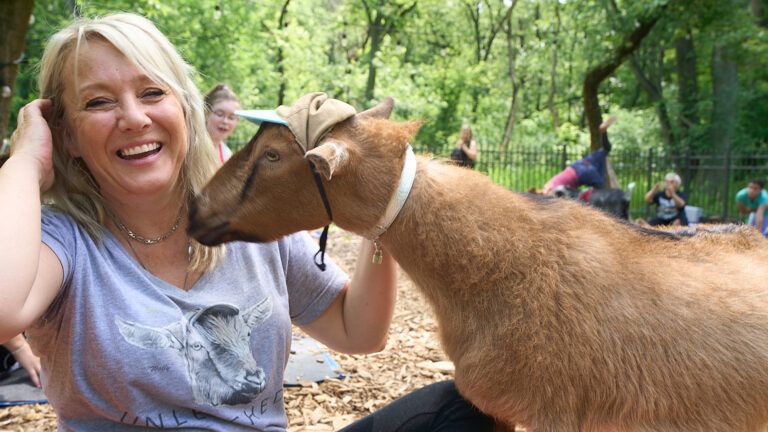Most people would not be thrilled to spot a cockroach in their home—or anywhere, really. But 12-year-old Shelby Counterman has thousands of them in her bedroom. And that’s just the way she likes it.
When Shelby was only 18 months old, her mom, Meg, took her to the conservation district near their home in Claremore, Oklahoma. “Shelby spotted the tank of roaches, and she just lit up with excitement,” Meg says.
Around the same time, little Shelby received a diagnosis of neurofibromatosis, a genetic disorder that causes tumors to grow on nerves. Her leg became so bowed that she had to wear a brace. Everyday life became challenging, and as Shelby grew, Meg could see how her daughter’s condition frustrated her, despite her happy disposition.
But on Shelby’s third birthday, things changed. Her parents gave her an unusual gift: five Madagascar hissing cockroaches. Shelby was ecstatic. “They were all males,” Meg says, “so it wouldn’t get out of hand.” Interacting with her new pets took Shelby’s mind off her condition. She devoted herself to caring for these creatures that were often misunderstood—she knew how that felt.
The roach population in her bedroom didn’t stay small for long. “When I was five, we got some female roaches and I started breeding them,” Shelby says. “We went from five to 200 pretty quickly.” Meg says, “I thought her affinity for bugs would be a phase, but her interest in them has only grown.”
Today Shelby’s collection is made up of about 5,000 roaches, including 17 different species. She keeps them in tanks in her bedroom. “My favorite is the Simandoa cave roach,” Shelby says. “They were discovered in a cave in Africa in 2004 and are now extinct in the wild, so they’re really unique.”
Not all of Shelby’s cockroaches have names, but one of her favorites is a death’s head cockroach she named Shadow. “Shadow is calmer than some of my other roaches, and when I hold him, his legs are not as prickly on my skin,” she says.
Shelby knows that most people don’t understand her passion. “When someone says they’re gross, I explain that there are 4,500 roach species in the world and only a handful of them are bad for humans,” she says. “I want people to understand that roaches actually help us and play an important role in our ecosystem. They are decomposers. They eat garbage and other waste. They have a job to do.”
Shelby’s insects continue to help her cope with her condition. Two years ago, she began having severe back pain. X-rays revealed that, because of her neurofibromatosis, Shelby’s spine was now shaped like a Z and she would need surgery. Doctors also discovered that she had a brain tumor. Thankfully, the growth was benign and could be removed. Then just a month later, she needed ankle surgery. “When I feel down or I’m sick, my roaches make me feel better,” Shelby says. “I like to rub their bellies with my finger and watch them move their feet.” She also likes to sit by them while she reads.
Shelby has other animals too. “I have taxidermy beetles, a tarantula, two dogs, a cat, two lizards and a snake,” she says. “And my brother has a bunny.” You might think she’s on the path to becoming an entomologist. “I want to become a lawyer because I like to argue with my brother,” she says. “But I’ll always love all animals, especially roaches.”
Did you enjoy this story? Subscribe to All Creatures magazine.





